Table of Contents
Hot Weather? Heatwave? When choosing a new dog for your family, keeping the local climate in mind is always crucial.
Some breeds, for instance, will struggle to survive in heatwaves.
Others may gain frizzy furballs if they are forced to dwell in locations with high humidity all the time.
But today, we’re going to discuss the best dog breeds that can withstand hot weather.
So sit back, grab an ice-cold beverage, and check out the list of warm-weather breeds below.
But, before we get into specific breeds, let’s look at some traits that help dogs beat the heat.
Can Dogs Handle Hot Weather?
Yes, some Dogs can withstand certain hot temperatures. However, a variety of things influence how well your dog copes in hot weather.
Some breeds were bred expressly for cold climates, while others are genetically predisposed to overheat.
In other words, some dogs are more tolerant of hot weather than others; therefore, you must constantly provide the finest possible care for your dog when the temperature rises.
Unless your dog is a giant breed, size does not have a significant factor in whether it can handle high temperatures, although it can have a minor impact.

Smaller dogs, on average, can endure higher temperatures than larger canines, though there are rare exceptions.
Here’s how to cool your dog down in 6 easy steps.
Obese, extremely young, elderly, or brachycephalic dogs, regardless of size, will have a harder time staying cool in the heat.
Additionally, dogs with thicker coats may have a more challenging time staying cool in hot weather when compared to dogs with short or thin fur.
How Hot Can Dogs Tolerate?
Temperatures in dogs should not exceed 104 degrees. If your dog’s temperature rises, then you should prepare to treat them over heatwave.
Because a dog’s body temperature is generally between 100 and 103 degrees, temperatures above that can cause difficulties for your dog, even if they are merely lounging outside in the sun.
However, if the temperature is below 100 degrees and the humidity is high, this can be an issue because the dampness hinders a dog from effectively cooling itself by panting.
If your dog is outside in the sun for long periods, especially exercising, high humidity and temperatures in the 80s or 90s might cause problems.
Overall, the lower the heat has to affect your dog, the more humid it is negatively. Your dog could be able to handle higher temperatures.
What Dogs are Bad in Hot Weather?
To know the dogs that do well in hot weather, you need to know those that can’t stand hot weather at all.
Overheating is common in dogs with thick, double coats. Short-nosed breeds, such as Bulldogs and Pugs, are also affected, as they can’t pant as well to cool off.
If you desire a heat-sensitive breed, you’ll need to keep your dog indoors with you on hot days, and you’ll need to exercise your dog with caution in the heat.
So, if you are considering adopting a dog and live in an area where it is frequently hot, especially during the summer months, consider the breed’s compatibility for such conditions before deciding.
Even if you already have a dog, knowing how dogs react in hot weather will help you cope better.
10 dog breeds that can’t stand the heat
- English Bulldog
- Chow Chow
- French Bulldog
- Cavalier King Charles Spaniel
- Boxer
- Pomeranian
- Alaskan Malamute
- Akita Inu
- Pekingese
- Japanese Chin
How Long Should Dogs be Outside in Hot Weather?
While dogs enjoy being outside, it is preferable to bring them inside before evening so that you can spend time with your family.
However, especially in hot or cold weather, you may wonder how long you can keep your dog outside securely during the day.
The answer is a little more complicated than you might think, and it depends on your dog’s specific needs, health, and breed.
We’ll look at how to tell when it’s time to bring your dog inside after a day of outside activity.
How To Tell If Your Dog Is Too Hot
You should know how to identify if your dog is overheating because there is no hard and fast rule about how hot is too hot for your dog.
The first indicators that your dog is excessively hot include excessive panting, drooling, lethargy, vomiting, diarrhea, increased thirst, and bright red gums and tongue.
Stumbling, collapse, unconsciousness, and even convulsions might occur when their body temperature rises.
Whether you keep an eye out for these signs, you’ll be able to tell whether your dog needs to be moved into a cooler setting or if they can stay outside.

Both big and small dogs will tolerate higher temperatures for more extended periods with the help of water and shade, but you should still keep an eye out for signs of overheating.
You can always take your dog’s temperature if you’re not sure if it’s too hot. To check your dog’s rectal temperature, purchase a digital thermometer from a drugstore or pharmacy.
If the temperature rises above 104 degrees, take your dog to a cooler location right away.
However, here are signs of an overheating dog:
- Rapid, heavy panting that continues even while your pet is resting
- Elevated body temperature (101.5° is a normal temperature)
- Signs of distress
- Dark red or purple tongue
- Increased drooling
- Reluctance to move
- Weakness
- Vomiting
- Stumbling and dizziness
- Collapse
- Coma
At what Temperature is Pavement too Hot for Dogs?
On days that most people wouldn’t consider scorching hot, dogs can have burns on their paws.
When the outside temperature is a pleasant 25 degrees Celsius (77 degrees Fahrenheit), there is minimal wind, and humidity is low, asphalt and tarmac can reach a scorching 52 degrees Celsius (125F).
When the temperature reaches 31 degrees Celsius (143 degrees Fahrenheit), this can reach 62 degrees Celsius (143 degrees Fahrenheit) (87F).
It’s worth noting that an egg may cook in five minutes at 55 degrees Celsius (131 degrees Fahrenheit), whereas skin can be destroyed in just one minute at 52 degrees Fahrenheit (125F).
Hence, at 55 degrees Celsius, it’s not advisable not to walk your dog on the pavement.
Pavements get extremely heated because they absorb and hold heat throughout the day.
To ascertain that your dog’s paws are safe, owners should place the back of their hand on the surface for seven seconds, according to their suggestion.
It’s too hot to walk a dog if they can’t keep it down.
How Do I Know if My Pavement is too Hot for my dog?
Some dogs, like some people, can acclimate to greater temperatures over time. However, if the temperature outside is above 77 degrees Fahrenheit, consider whether the heat harms your dog.
When under bright sunlight with no breeze and low humidity, pavement temperatures can be substantially hotter than the air, resulting in footpad burns even though the air does not feel hot.
Standing on the hot ground for 60 seconds can produce burns since the pavement might be 40-60 degrees hotter than the ambient temperature.
If the ground temperature isn’t an issue, anything greater than a dog’s body temperature for an extended period can be harmful.
How to Identify the Best Dog Breeds for Hot Weather: Characteristics
Most dogs who are at ease in hot weather have one or more of the following characteristics:
1. Small Body Size
A dog’s size, like his body form, affects his skin-to-body-weight ratio.
Dogs with a lot of skin will usually keep their cool better than dogs with a lot less skin.
Small dogs are better suited to hot weather than larger canines because they have a higher skin-to-body-weight ratio.
2. Short Coat
Long coats serve as blankets, trapping your dog’s body heat, which is beneficial for dogs who must live in cold areas, but it is detrimental to animals who dwell in warm settings.
There are a few exceptions (included below), but dogs with short hair are better suited to warmer conditions than their long-haired counterparts and it’s also easier to spot Lyme disease causing ticks on short haired dog breeds.
3. Single Coat
A double coat is common in dogs, with a short, downy undercoat and a longer, rougher overcoat.
The topcoat serves to defend the dog from the elements, while the undercoat aids in keeping the dog warm and comfortable.
Warm-weather breeds often have only a single coat, lacking the rich undercoat found in many cold-weather breeds.
4. Lanky Build
A dog’s body will dissipate heat more effectively into the environment if it is longer and lankier.
This happens because dogs with slim bodies have more skin relative to their body weight than dogs with broader bodies, all else being equal.
The more skin a dog has, the faster his body cools down.
5. Long Nose
A long nose functions similarly to an air conditioner because it cools the air entering your dog’s lungs.
On the other hand, dogs with long noses are more suited to hot weather than dogs with short noses.
Brachycephalic (short-faced) breeds, in particular, are not well suited to hot conditions.
6. Large Ears
Ears act as radiators, allowing your dog’s body to expel excess heat.
As a result, most canines that are well-suited to hot conditions have large ears.
Furthermore, dogs with erect ears are likely to be better adapted to hot weather than those with floppy ears, as this helps expose most of the ear’s surface to the air.
7. Warm-Temperature Roots
Another factor to think about is the place where the breed originated.
Warm climes are rarely comfortable for dogs who were bred to thrive in cold environments.
On the other hand, breeds developed in hot areas are more likely to have characteristics that assist them in staying cool in hot weather.
8. Light Fur Color
White, khaki, or tan fur will absorb more sun rays than black or dark brown fur.
If you live in a warm climate and choose between a dark and light-colored puppy, choose the light-colored one.
12 Best Dog Breeds for Hot Weather – Heatwave Dogs
Dogs are flexible companions, but the environment you live in can significantly impact how happy your pet is daily.
The best dog breed for hot weather has the correct coat (or none at all!) and a body type that is more suited to the heat.
These breeds evolved in warm climates over many generations of adaption and selective breeding to fit their habitat.
However, when it comes to remaining cool, not all dogs are made equal.
Consider these twelve breeds that do well in hot weather; they can jump in a nearby river for a pleasant companion on your next summer vacation.
1. Great Dane
Danes are among the tallest dogs and frequently listed on lists of most dangerous dog breeds, yet they also have one of the shortest coats. Hence, this makes them the best dog breed that withstands hot weather.
Great Danes are energetic and enjoy being outside when the sun is shining. Although this dog can endure hot conditions, use caution because Great Danes have difficulty controlling their body temperature.
Excessive heat exposure can cause dehydration, sunburn, and, in the worst-case scenario, heatstroke.
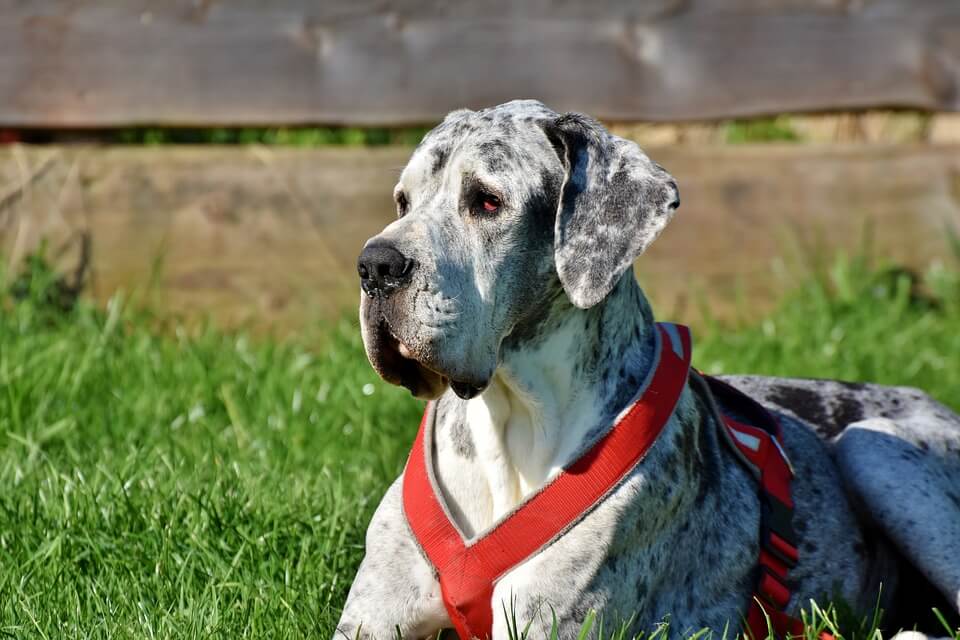
Also, keep in mind that a Great Dane doesn’t have any protective fur to keep them cool. You must ensure that you do not expose your dog to severe heat.
Due to this, a Great Dane may not accompany you on a hike, but he will snuggle up to you. They enjoy lounging on the couch, bed, or even your lap and leaning on you, but they especially enjoy the heat.
These gentle giants belong to the Mastiff family and were developed in Germany, not Denmark.
2. German Short-haired Pointer
German short-haired pointers are one of the more versatile hunting dogs. It can utilize them for a range of tasks, making it the second on our list of the best dog breeds for hot weather.
Although German short-haired pointers are from temperate climates, their short hair and lanky physique allow them to be quite comfortable in hot weather.
German Short-haired Pointer is adaptable to a variety of lifestyles and living situations. They are unconcerned about traveling from one location to another with their owner.
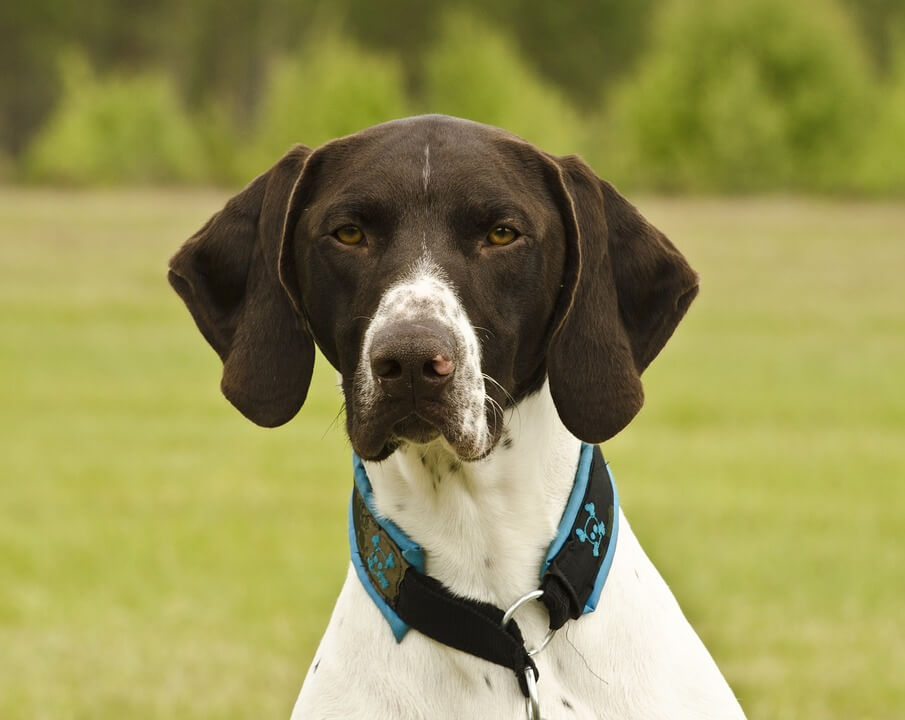
They make excellent upland bird dogs, but they can also retrieve ducks from the water.
Equally, they can also track and trail larger animals such as raccoons, pigs, and bears. They can complete any task!
For other families, though, they are a little too lively and needy. They get along with everyone in the family and shower you with affection, but they require a lot of activity and dislike being left home alone for long periods.
3. Basenji
Basenjis come from some of the world’s hottest and wettest forests.
And it’s our third as one of the best dog breeds for hot weather.
Not only do they have a short coat, but they also have somewhat large ears that are usually held erect and exposed to the breeze.
Basenjis are super cool dogs that are smart, athletic, and driven. Still, they can pose several issues for owners, and they aren’t ideal for all families — particularly those with little or no dog experience.
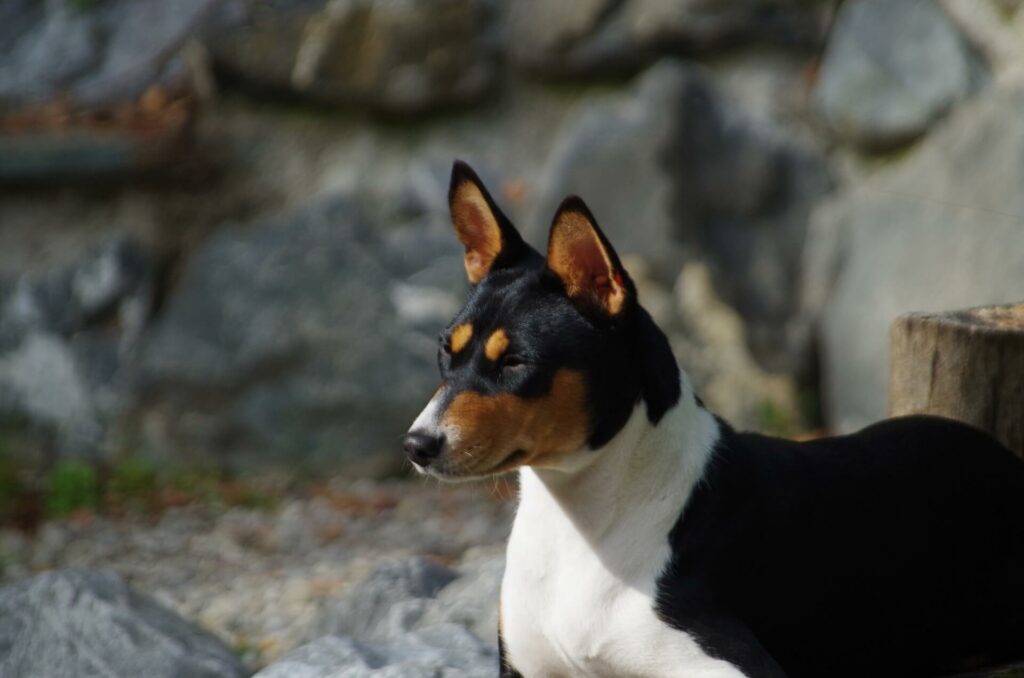
Also, Basenjis are confident, independent little buggers who are difficult to train.
They’re also likely to stray off now and then, and they enjoy stealing and hiding their owner’s cherished possessions.
4. Airedale Terrier
These brilliant dogs are like humans in that their intelligence can easily lead to boredom.
Airedales are the largest terriers, so keep them occupied with toys, exercise, and running around in the woods, your yard, or a park, but keep them out of the sun.
However, rocks and plastic playground equipment, for example, can be quite harmful to their paws.
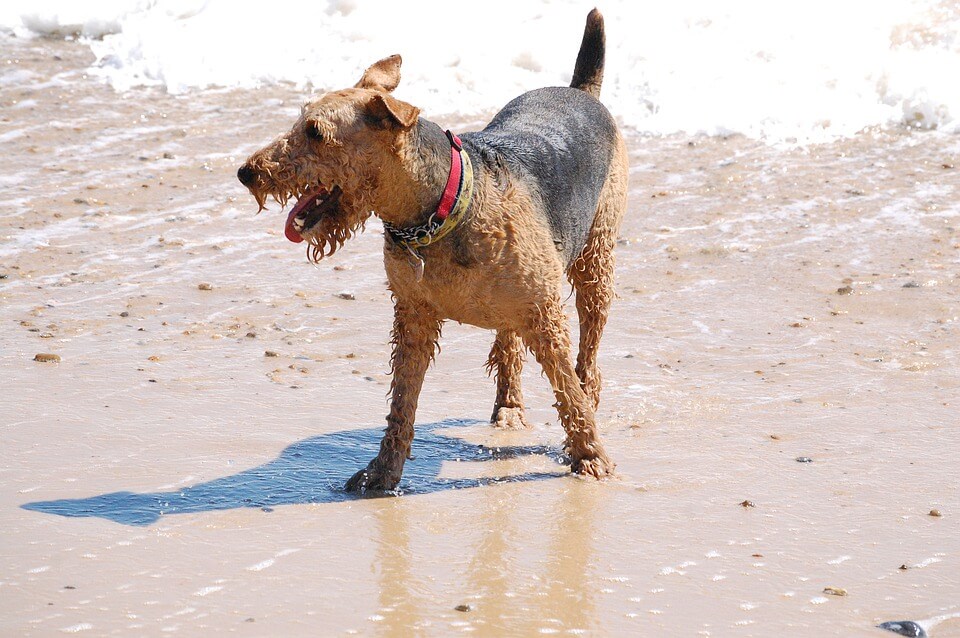
Meanwhile, the breed is a hunting breed that can be used on land and in water, but they are also energetic and a little funny, with lots of endurance for summer exploration.
In tropical climates, Airedales’ coats make them exceptionally easy to care for—strip their coat down a little more when the temperature rises, and if it gets chilly in the winter, just let it grow out.
5. Dalmatian
Dalmatians are firefighting dogs; therefore, they are used to being in hot weather.
These characteristics were vital to Dalmatians for another reason: they have been expected to sprint for miles throughout their history.
They needed a physique constructed for running and adaptations that would help them avoid overheating while running.

Dalmatians have a lot of activity, so be sure you’re ready to give one of these polka-dotted pups ample exercise before bringing one into your home.
Dalmatians who do not get enough exercise are prone to acting out in destructive ways.
6. Afghan Hound
Although the Afghan Hound’s long, flowing locks may not appear ideal for hot conditions at first appearance, these canines are pretty comfortable in them.
Surprisingly, they also perform well in cold weather, which is unlikely to be expected of canines bred in Afghanistan’s harsh climate.
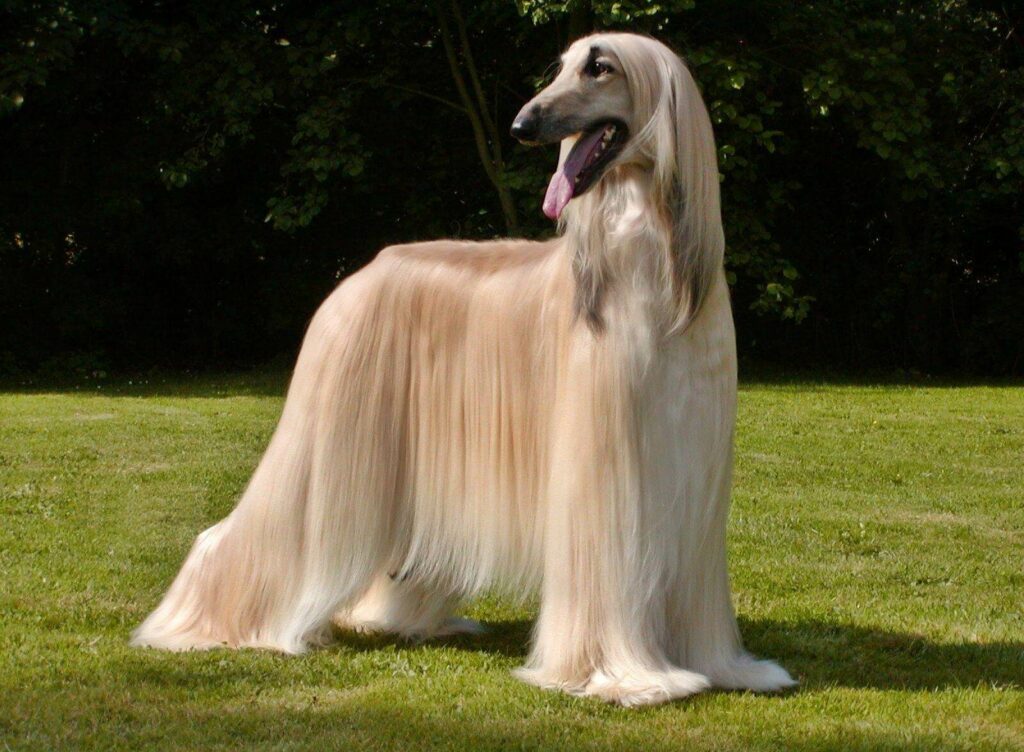
Afghan hounds are sighthounds that track down and subdue prey (sometimes formidable prey, like leopards). This needed them to be not only quick but also astute.
They have to learn to think for themselves, which is difficult for modern Afghan owners because these are autonomous canines operating on their timetables.
7. Rat Terrier
Rat terriers are naughty small canines with an outgoing personality.
It has most of the characteristics you’d expect from a dog that thrives in hot weather, such as a short, primarily light-colored coat and large ears that assist vent heat into the environment.
When the temperature rises, their small body size also aids them in shedding excess body heat.
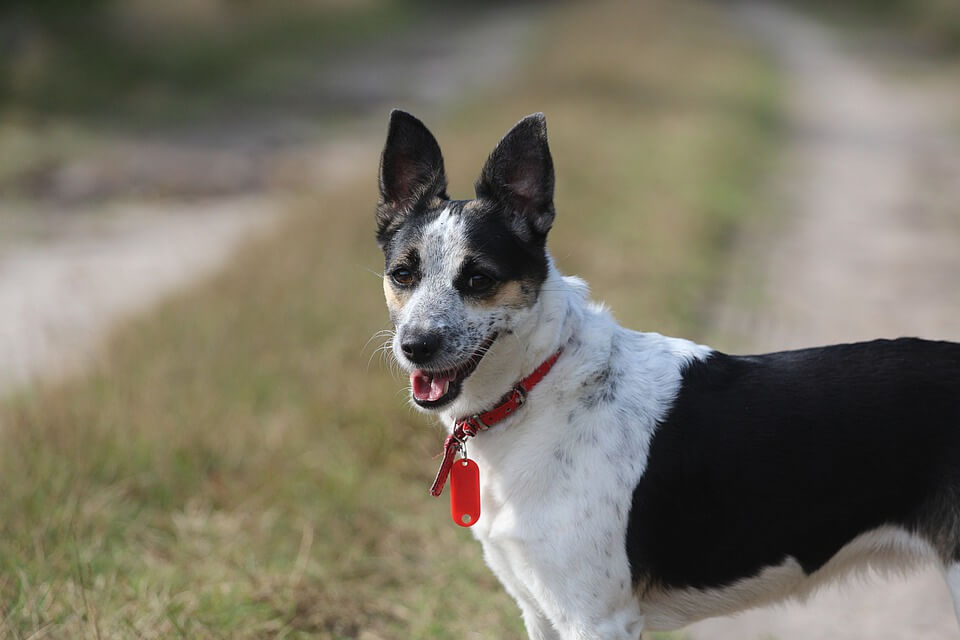
They have a normal terrier demeanor in that they are affectionate toward their owners and enjoy hanging out with them (particularly the kids).
Also, they aren’t highly outgoing, but given time, and they will open up to strangers.
8. Doberman
Dobermans, despite their black fur, usually are relatively comfortable in warm weather. Their short coats, lanky bodies, long muzzles, and large ears more than compensate for their dark coloring.
I think Dobermans are incredibly affectionate canines, one of the few large dog breeds that aren’t a horrible choice for first-time dog owners.
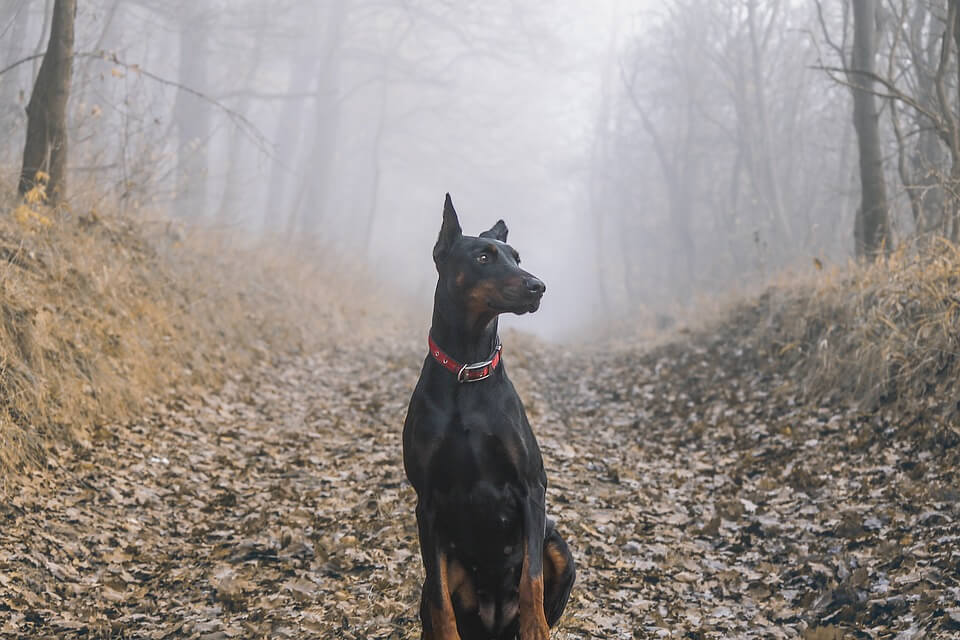
They are bright and easy to train, and they thrive on receiving their owner’s love, acceptance, and attention.
Equally, they are unquestionably protective of their families, but well-socialized dogs prefer to welcome outsiders with open arms, which is unusual for a dog designed to defend.
9. American Foxhound
The Foxhound has a short coat, which helps to keep the breed cool in hotter weather.
Don’t be misled by its cute appearance and pleasant demeanor—this breed may be stubborn and requires training, although it gets along well with families and other pets.
Because of their energy and love of running, American Foxhounds make excellent jogging partners for active pet parents. Their calm disposition makes them excellent family dogs, as long as they get the exercise they need.
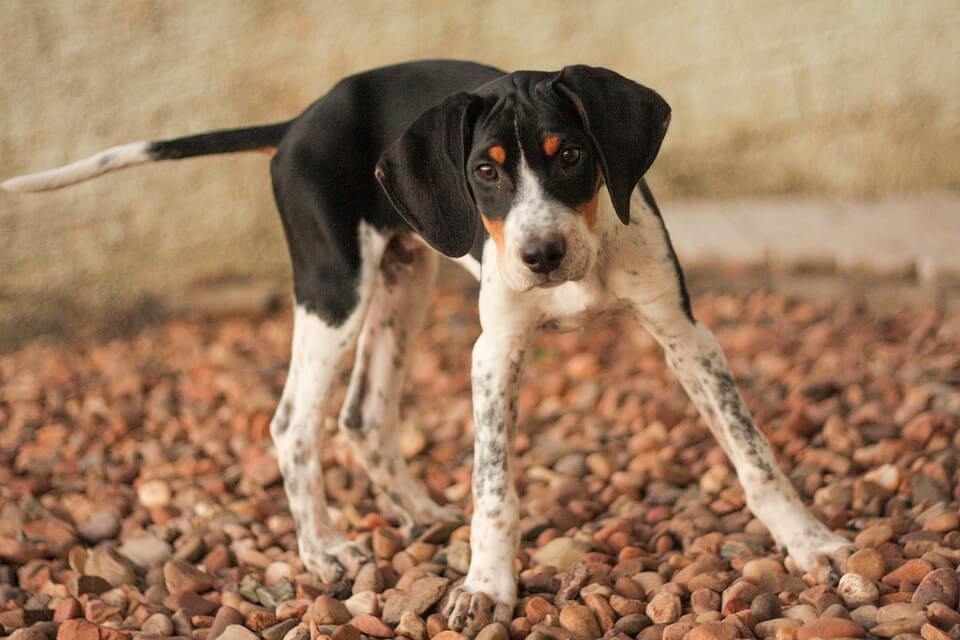
Apartment dwellers and inexperienced pet owners should be wary of these low-maintenance, affectionate dogs.
A stroll twice a day is sufficient; however, having a yard to run around in is preferable.
10. Ibizan Hound
The rabbit-hunting roots of the Ibizan Hound endowed them with a lot of adaptations that help them maintain their cool.
Their short coats, lanky physique, and large ears are examples of this.
And when I say huge ears, I mean big ears – those things can pick up satellite communications.
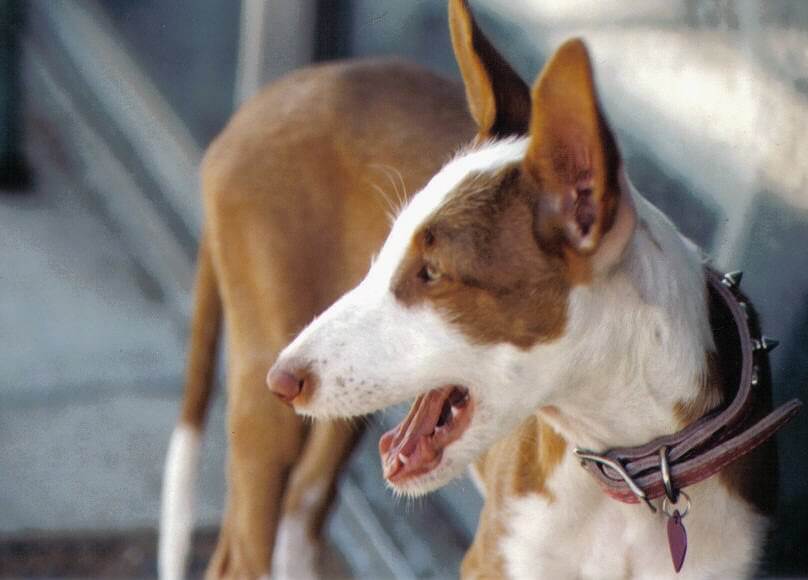
Ibiza hounds make excellent pets. With their families, they are affectionate, and they adjust to apartment life fairly well.
They are, however, extraordinarily energetic and will require daily opportunities to run around and play.
However, they can be violent against cats and other small animals, be cautious when introducing them to other pets.
11. Vizsla
The Vizsla is another big-eared breed with a short coat that is well-suited to warm climes.
These dogs aren’t from the Middle East or any other low-latitude locale; instead, they’re from Hungary, which has a moderate climate.
Despite this, they are usually highly comfortable in hot weather.

The Vizsla is one of the friendliest and most friendly breeds globally, greeting strangers and long-time friends alike with a wagging tail and a cheerful look.
They’re also brilliant and easy to train, as most dogs are only interested in pleasing their owners.
Before adding one of these loving dogs to your home, make sure you are eager to go for a good run with Fido and play about in the backyard with your canine every day.
12. Chihuahua
One of the best of its kind, this breed developed in the scorching deserts of Mexico; therefore, they’re used to hot conditions.
This pocket-sized pet is a versatile dog breed that thrives in warm weather climates. Because the Chihuahua’s thin coat and small size provide little insulation from the cold, this breed becomes more comfortable as the temperature increases.
However, this poses a significant disadvantage to them, especially in winter. To protect them during cold times, warm apparel for your Chihuahua will keep them warm in the cold.

Also, limit the time spent outside to 10 minutes which entails taking quick walks and playing outside for a short time.
Always keep them dry and offer them more food.
Chihuahuas prefer a warm atmosphere because they are little.
A warm temperature is between 690 and 720 degrees Fahrenheit. Set the thermostat no lower than 600 degrees Fahrenheit if you plan to leave the house. If you have little or sick pets, however, maintain the temperature higher.
Conclusion
The shape of a dog can reveal a lot about its ability to withstand heat.
Its coat is the most apparent. A double-coated, dark-furred dog, like a long, black fur coat worn by a person in the middle of July, appears irrational.
Meanwhile, short-haired, hairless, or single-coated dogs do best in hot weather, and their coats are usually lighter, such as white, tan, or gray.
Dogs with long noses are better suited to hot weather. Their large snouts filter warm air and cool it down before inhaling it.
Furthermore, dogs with large, erect ears cool down far faster than dogs with floppy ears, keeping heated air.
Although many breeds are well-suited to hot temperatures, we chose twelve of our favorites.
Point out all the ones we missed, and tell us about your favorite warm-weather pet in the comments section!
References
- topdogtips.com – 20 Dog Breeds That Don’t Do Well in Hot Weather
- vets-now.com – Why dog owners should avoid pavements and fake grass on hot days
- thesprucepets.com – What You Need to Know About Walking Your Dog on Hot Pavement

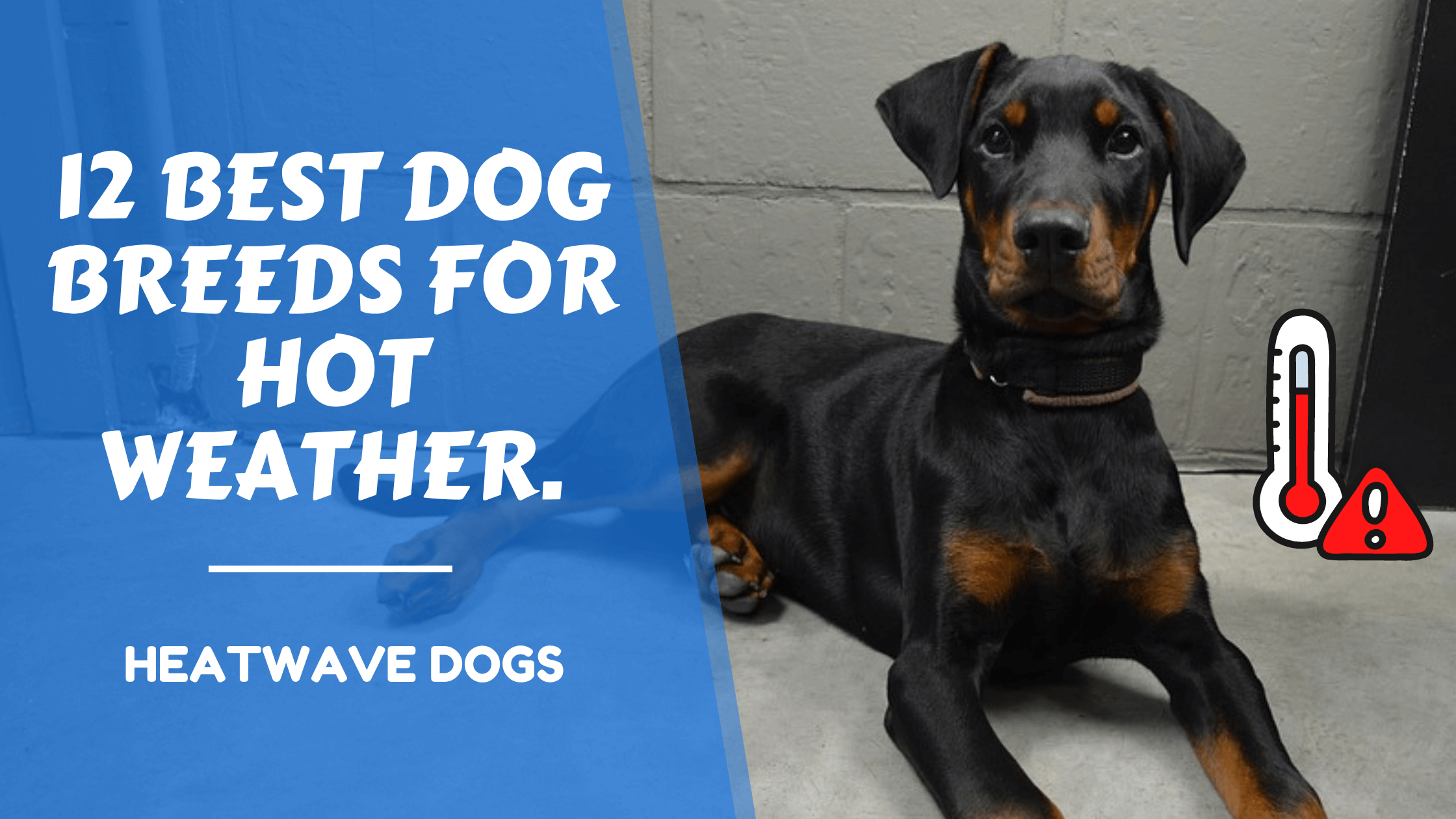

Bhai hama dog chaya great dane
Adopt Karna chata h